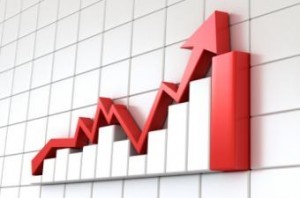 The question hovers over the U.S. economy as to whether the Federal Reserve will continue their rate hikes at the same rate at which it originally forecasted for 2016. Since the Fed raised the federal funds target rate from its near-zero level in December, one FOMC meeting has come and gone without another increase.
The question hovers over the U.S. economy as to whether the Federal Reserve will continue their rate hikes at the same rate at which it originally forecasted for 2016. Since the Fed raised the federal funds target rate from its near-zero level in December, one FOMC meeting has come and gone without another increase.
The FOMC will next meet on March 15 and 16, the second of eight meetings that will take place in 2016. There have been conflicting opinions as to the pace at which the Fed will raise the rates. Each quarter, the 17 policymakers of the FOMC provide their economic projections, with the last coming in December (and the next one coming in March). From the projections released in December, it is clear that the consensus view among the policymakers is that the rates are going higher, according to CoreLogic Chief Economist Frank Nothaft in the February 2016 Marketpulse [1] released on Tuesday.
“For 2016, the smallest increase in the target rate given expectations in the performance of the economy is 50 basis points,” Nothaft said. “The median increase for 2016 is 100 basis points, but this assessment could change if expected economic performance either strengthens or weakens. One thing is clear: the era of near-zero short-term interest rates is history.”
Fed Chair Janet Yellen stated in her testimony before the Senate Banking Committee that she was not ruling out negative interest rates in light of recent economic headwinds. She stated one day earlier in the House Financial Services Committee that the rate at which monetary policy will normalize will likely be even more gradual than was originally expected.
Still, the policymakers in the FOMC expect the short-term interest rates to return to their longer-run equilibrium steady rate of 3.5 percent by the end of 2018 after projected increases of 100 basis points each for 2016 and 2017 and a near 100-basis point hike for 2018. If the projections come true, the federal funds target rate of 3.5 percent by the end of 2018 would be the highest rate since January 2008, before the recession.
Nothaft said that fixed mortgage rates (which Freddie Mac reported [2] at 3.59 percent last week, slightly above 2015 lows) will rise less in the near term partly because of the Fed's buying of mortgage back securities because of paydowns in those securities. The demand for MBS will lift the prices of the securities, which will subsequently mitigate potential rises in mortgage rates. Since adjustable-rate mortgages are indexed to the federal funds target rate, interest rates on ARMs are likely to see an effect sooner, according to Nothaft.
Click here [1] to see the complete CoreLogic Marketpulse for February 2016.